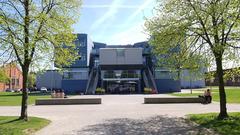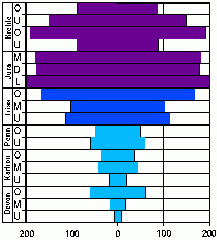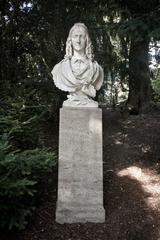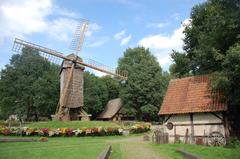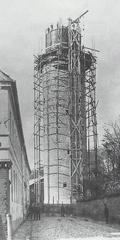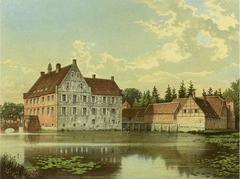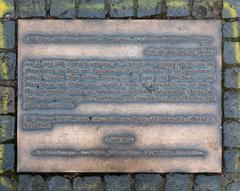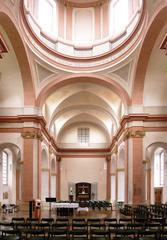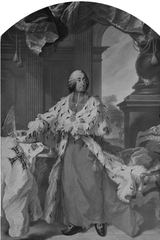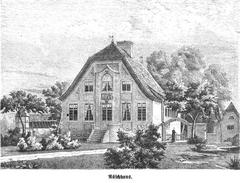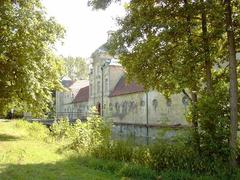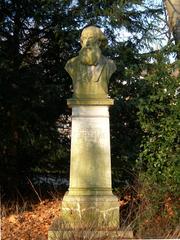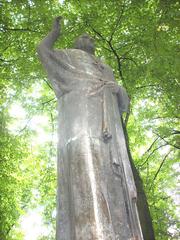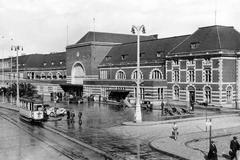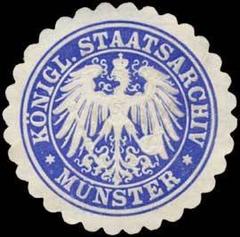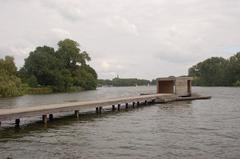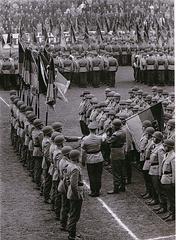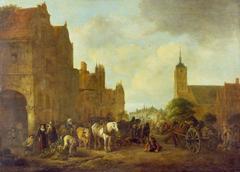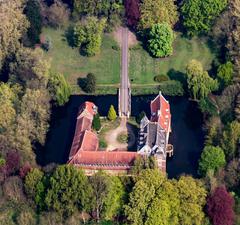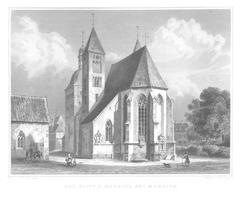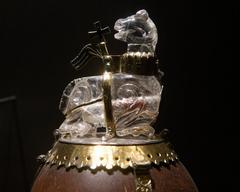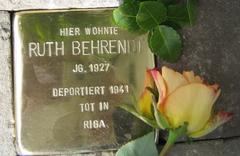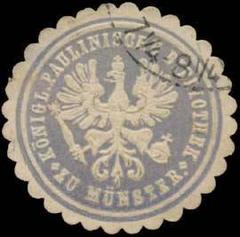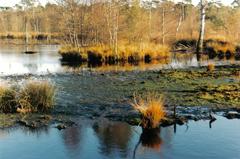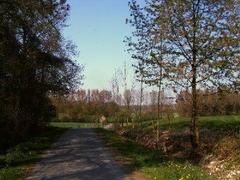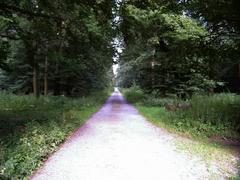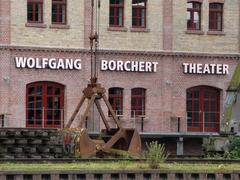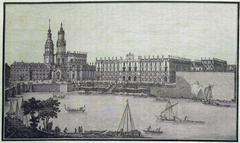Münster Historical Sites: Visiting Hours, Tickets, and Comprehensive Guide
Date: 14/06/2025
Introduction to Münster’s Living History
Münster is a city where centuries of social, cultural, and political transformation are etched into every street and square. Through the innovative perspective of “History From Below,” Münster offers visitors the unique opportunity to experience history through the lives of everyday citizens, grassroots movements, and marginalized voices. This approach moves beyond the stories of elites to reveal the vibrant, often untold narratives that have shaped the city’s identity.
Home to a renowned university and a wealth of well-preserved landmarks, Münster is an exceptional destination for anyone seeking to explore history through immersive museums, engaging exhibitions, and interactive tours. Whether you are drawn by the compelling artifacts at the Stadtmuseum Münster, the evocative sites like St. Lambert’s Church, or the dynamic installations at the LWL Museum for Art and Culture, Münster’s historical tapestry is both accessible and deeply engaging.
This guide brings together essential information on visiting hours, ticketing, accessibility, transport options, and insider tips, ensuring a seamless and enriching journey through Münster’s past. For the most current details, consult the Stadtmuseum Münster and Münster tourism website.
Contents Overview
- Introduction: Why Discover Münster’s History From Below?
- Understanding the “History From Below” Approach
- Top Historical Sites: Locations, Hours, and Tickets
- Accessibility, Transportation, and Visitor Amenities
- Guided Tours and Language Options
- Exhibition Highlights and Interactive Features
- Best Times to Visit and Practical Tips
- Special Events, Festivals, and Photo Spots
- Food, Refreshments, and Local Engagement
- Sustainability and Responsible Visiting
- Frequently Asked Questions (FAQs)
- Conclusion and Further Resources
Why Explore Münster’s “History From Below”?
Münster’s commitment to telling the stories of ordinary people—artisans, laborers, women, migrants—adds texture and relevance to its heritage. By walking in the footsteps of those who built, shaped, and defended the city, visitors gain a richer understanding of Münster’s evolution from its medieval foundations to a vibrant, modern community. This guide is designed to help you navigate Münster’s treasures with confidence and curiosity.
Top Historical Sites: Visiting Hours, Tickets, and Highlights
1. Stadtmuseum Münster
- Significance: Chronicles Münster’s development through the lens of its citizens, with immersive exhibits on daily life, commerce, and social change.
- Hours: Tuesday–Sunday, 10:00 AM – 6:00 PM; closed Mondays.
- Tickets: Adults €6, reduced €4, children under 18 free. Special exhibitions may vary (€3–€7).
- Accessibility: Fully wheelchair accessible; accessible restrooms and elevators available.
- Highlights: Reconstructed merchant houses, Anabaptist Rebellion displays, 16th-century artifacts, and interactive digital installations.
2. Mühlenhof Open-Air Museum
- Significance: Preserves rural and urban life from the 17th to 19th centuries with authentic buildings and craft demonstrations.
- Hours: April–October, 9:00 AM – 6:00 PM; November–March, 9:00 AM – 4:00 PM.
- Tickets: Adults €5, reduced €3, children under 14 free.
- Accessibility: Most areas accessible; check in advance for specific needs.
3. St. Lambert’s Church
- Significance: Iconic for its iron cages—grim reminders of the executed Anabaptist leaders—and pivotal role in Münster’s religious history.
- Hours: Daily, 9:00 AM – 6:00 PM.
- Tickets: Free entry; donations appreciated.
- Accessibility: Partial wheelchair access.
4. LWL Museum for Art and Culture
- Significance: Merges art with the social history of Westphalia, featuring both masterpieces and everyday artifacts.
- Hours: Tuesday–Sunday, 11:00 AM – 6:00 PM; closed Mondays.
- Tickets: Adults €10, reduced €5.
- Accessibility: Fully accessible.
5. Friedenssaal (Hall of Peace)
- Significance: Site of the Peace of Westphalia treaties, a milestone in European history.
- Hours: Tuesday–Sunday, 10:00 AM – 5:00 PM; guided tours only.
- Tickets: Included with Münster Card, or €5 individually.
- Accessibility: Wheelchair accessible with assistance.
6. Schloss Münster (Münster Palace)
- Significance: Baroque palace, now the University of Münster’s main building, with adjacent botanical gardens.
- Hours: Grounds open daily; interior by guided tour only.
- Tickets: Guided tours €8; free for students.
- Accessibility: Grounds accessible; tours can accommodate accessibility requests.
7. St. Paulus Dom (Münster Cathedral)
- Significance: Gothic cathedral dating to the 13th century, featuring a Renaissance astronomical clock.
- Hours: Daily, 7:30 AM – 7:00 PM.
- Tickets: Free entry.
- Accessibility: Fully accessible.
8. Graphikmuseum Pablo Picasso
- Significance: Houses an extensive collection of Picasso’s lithographs and prints in a historic setting.
- Hours: Wednesday–Sunday, 10:00 AM – 5:00 PM.
- Tickets: Adults €5; concessions available.
- Accessibility: Wheelchair accessible.
Accessibility, Transportation, and Visitor Amenities
- Bicycles: Münster is Germany’s “bicycle capital,” with extensive bike paths and rentals available near the Hauptbahnhof.
- Public Transport: Efficient bus and tram networks connect all major sites. Day passes are recommended for convenience.
- Walking: The Altstadt is compact and pedestrian-friendly.
- Accessibility: Most attractions are barrier-free; check individual sites for details. Accessible restrooms and elevators are widely available.
Guided Tours and Language Options
- Guided Tours: Major sites and museums offer regular tours in German and English. For a social history focus, Stadt Lupe Münster Touristik specializes in “History From Below” themes.
- Audio Guides: Available at most museums in multiple languages.
- Digital Resources: Download the Münster tourism app for self-guided audio tours and augmented reality features.
Exhibition Highlights and Interactive Experiences
- Archival Materials: Personal letters, photos, and documents from workers, artisans, and activists.
- Interactive Installations: Multimedia displays, oral histories, and digital timelines bring history to life.
- Special Exhibitions: Rotating themes explore pivotal events like the 1848 revolutions, women’s movements, and migration.
- Family Activities: Scavenger hunts, storytelling, and hands-on workshops during school holidays.
Best Times to Visit and Insider Tips
- Seasons: Spring and autumn offer mild weather and coincide with cultural festivals.
- Crowds: Early mornings and weekdays are quieter; weekends and festival periods are lively.
- Tickets: Book in advance for tours and special exhibitions, especially during peak seasons.
- Photography: Allowed for personal use (no flash/tripods); check venue policies.
Special Events, Festivals, and Top Photo Spots
- Tag des offenen Denkmals (Open Monument Day): Annual September event with special tours and workshops.
- Weekly Markets: Domplatz hosts lively markets on Wednesdays and Saturdays.
- Festivals: “Münster verwöhnt” and other culinary/cultural events enliven the Schlossplatz and harbor.
- Photo Spots: Prinzipalmarkt’s arcades, St. Lambert’s iron cages, the Peace Hall, and the Kreativkai waterfront.
Food, Refreshments, and Local Engagement
- Nearby Dining: The Hafenviertel district offers riverside cafés and international cuisine.
- Picnic Options: Parks and botanical gardens near Schloss Münster are perfect for a break.
- Local Flavors: Try Westphalian specialties at market stalls or traditional restaurants.
Sustainability and Responsible Visiting
Münster fosters sustainability by promoting cycling, digital ticketing, and recycling at major venues. Many museums partner with local organizations on eco-friendly initiatives and community engagement. Visitors are encouraged to respect exhibit guidelines, minimize waste, and participate in workshops or volunteering programs when available.
Frequently Asked Questions (FAQs)
Q: What are the regular visiting hours for Münster’s main museums and sites?
A: Most museums are open Tuesday–Sunday, from 10:00 or 11:00 AM until 5:00 or 6:00 PM. Churches and outdoor sites may have longer hours; always check official websites for current schedules.
Q: How much do tickets cost?
A: Many sites offer free entry; museums and special exhibitions range from €3–€10. Discounts for students, children, and seniors are common.
Q: Are English-language tours available?
A: Yes, most major sites offer tours in English. Advance booking is recommended.
Q: Is Münster accessible for visitors with limited mobility?
A: Yes, most venues have barrier-free access and accessible restrooms.
Q: What is the best way to get around?
A: Cycling, walking, and public transport are the most efficient ways to explore Münster.
Conclusion: Immerse Yourself in Münster’s Social Heritage
Exploring Münster’s historical sites with a “History From Below” perspective offers a profound and personal connection to the city’s past. From the bustling markets of Prinzipalmarkt to the evocative exhibitions at the Stadtmuseum and the solemnity of St. Lambert’s Church, each site enriches your understanding of Münster as a living, evolving community.
To enhance your experience, download the Audiala app for up-to-date tour options and exclusive content, and follow Münster’s official tourism channels for the latest events and updates.
Official Resources and Further Reading
For additional information, visit these authoritative sources:
- Stadt Münster: Historical Sites, Opening Hours, Tickets & Travel Tips
- Münster Tourism: Visitor Information and City Guide
- Germany Travel: Top Historical Sites and Visitor Tips
- Stadtmuseum Münster: Exhibitions and Events
- Stadt Lupe Münster Touristik: Guided Tours
- ArtReview: Skulptur Projekte Münster
- MS Aktuell: Münster Events
- Explorial: Münster St. Paulus Dom
Including high-quality images, descriptive alt text, and interactive maps is recommended for enhanced engagement and accessibility.
